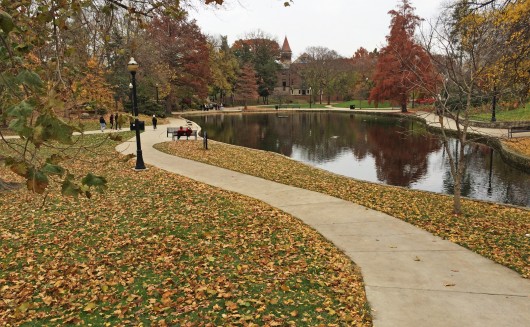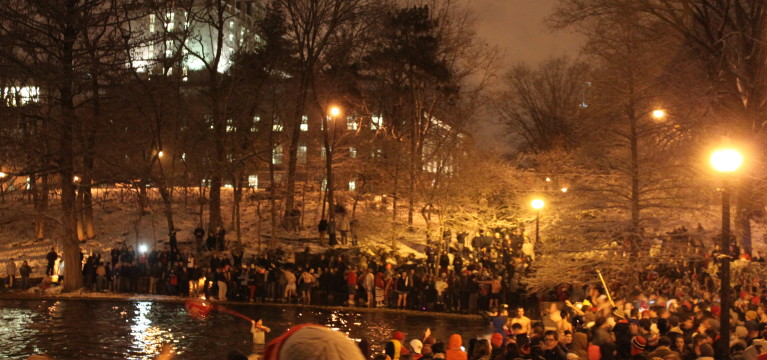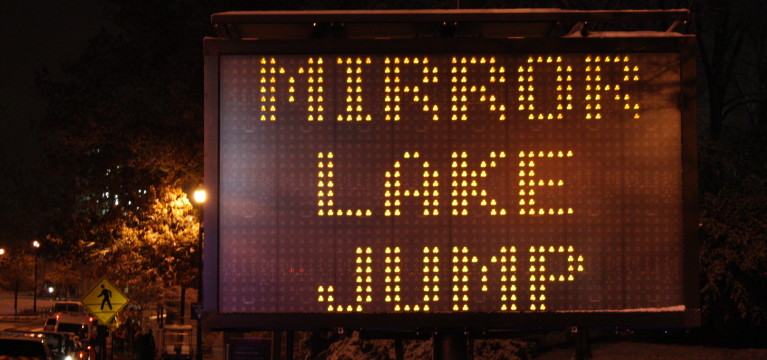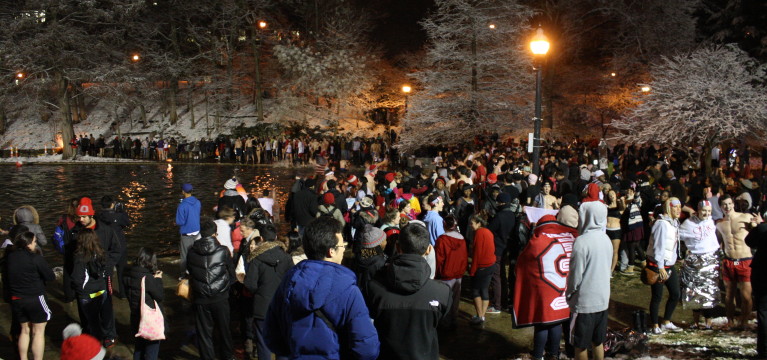The Mirror Lake jump cost the university an estimated $100,000 last year — more than double what it cost before students were required to obtain wristbands for entry into a fenced-off area around the lake.
And while many students took to the lake a night early last year to protest those requirements, it’s unclear what University Police will do if that happens again.
As for this year, the cost of the event won’t be known until after the event, Administration and Planning spokesman Dan Hedman said in a Monday email.
“Because this is not a university event, it is difficult to know in advance how much will be needed to enhance safety,” he said.
The jump cost Ohio State more than $46,000 in 2012 — the last year students were able to jump without a wristband. About half of that was for repairs to the lake while the other half was for public safety presence.
While Hedman said a breakdown of last year’s $100,000 cost is not readily available, he said the money came from various departments across campus, including the Office of Student Life, the Department of Public Safety and Facilities and Operations Development.
Jumping in Mirror Lake before the OSU football game against the University of Michigan is a university tradition. This year’s jump is set to occur Nov. 25, and as of Monday evening, about 3,300 people had responded to a Facebook event saying they plan to attend.
This year, the Mirror Lake area will be fenced off and access to the campus landmark for the jump will be available through two primary entry points to those with wristbands, which will be available to currently enrolled students. Wristbands are set to be available to current students from Friday through Nov. 25 at the Ohio Union and the RPAC Welcome Center.
Department of Public Safety security personnel are set to check wristbands at the entrances while Student Life employees are set to be stationed in the wider perimeter, University Police Chief Paul Denton said.
He said the Department of Public Safety plans to make sure every person attempting to enter is checked for a wristband, even though some students got into the area last year without being checked. He added that there will be sufficient staff around the two entry points as well as proper lighting to help ensure every person attempting to enter has a wristband.
Controversy surrounded the 2013 jump when it was announced fences would be erected around the lake for safety purposes.
Some people protested last year’s efforts and took to social media to plan a separate jump the night before the actual one was supposed to happen. About 1,500 people followed through and knocked down the fences to enter the lake on the Monday night before the scheduled jump.
The next night, approximately 10,000 to 12,000 people participated in the scheduled Mirror Lake jump.
Though some students knocked down portions of the fences, Hedman said police noticed large crowds of people gathering so police created openings in the fences to let people in.
But it’s unclear if police plan to do the same this year should students gather around the lake prior to the scheduled jump.
When asked what measures police plan to take if that happens, Denton said officers will be ready, but didn’t specify what they plan to do.
“We’re prepared for situations for events across campus every day,” he said. “If it happens, we will respond appropriately.”
Denton said students should consider their own safety and the safety of others before they engage in any behavior, though.
Ultimately, the circumstances will dictate what happens, Hedman said.
Correction Nov. 17, 2014 An earlier version of this story misstated the name of Facilities Operations and Development.
























